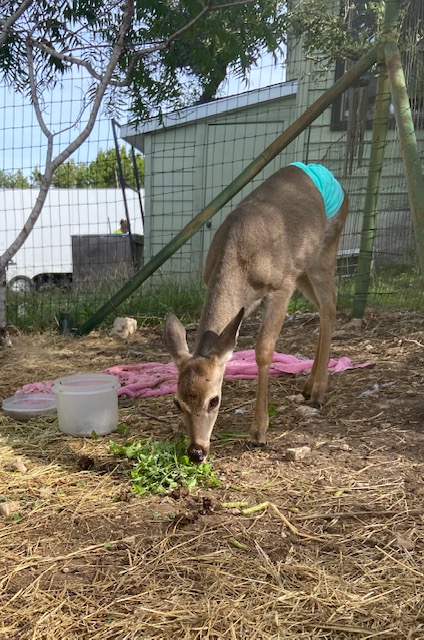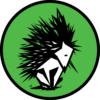Found an Injured Fawn? Here’s What You Can Do:

Encountering an injured fawn on the road can be a distressing experience, but your compassionate response can make a significant impact on its well-being. If you find yourself in this situation, please follow these steps to ensure the best care for the injured fawn:
- Ensure Safety First: Your safety and the safety of others on the road are paramount. If possible, pull over to a safe location, turn on hazard lights, and approach the injured fawn cautiously. Be aware of traffic and potential hazards in the vicinity.
- Observe from a Distance: Assess the fawn’s condition from a safe distance without causing additional stress. Injured fawns may appear scared or disoriented, so minimizing noise and movement is crucial.
- Contact Wildlife Professionals: The best course of action is to contact local wildlife rehabilitation professionals or animal control authorities. They possess the expertise needed to assess the fawn’s injuries and provide appropriate care.
- Avoid Direct Handling: Resist the urge to handle the fawn directly, as this can cause additional stress and may inadvertently worsen its injuries. Wait for trained professionals who can safely and appropriately transport the fawn to a rehabilitation facility.
- Provide Location Details: When contacting wildlife professionals, be prepared to provide specific details about the fawn’s location. This information is crucial for a swift and effective response.
Found a Fawn by Itself? Here’s What You Can Do:
Discovering a lone fawn can be a delicate situation, and your thoughtful actions can make a significant difference in ensuring its well-being. If you find yourself in this circumstance, follow these steps to provide the best care for the orphaned fawn:
- Observe from a Distance: Before taking any action, observe the fawn from a distance. Fawns are often left alone by their mothers for periods during the day as a natural survival strategy. The mother may be nearby, ensuring the fawn’s safety while foraging.
- Check for Signs of Distress: Assess the fawn’s condition without approaching too closely. Signs of distress include persistent crying, visible injuries, or signs of illness. If the fawn appears healthy and calm, it may not be orphaned.
- Monitor for an Extended Period: If the fawn seems well but is without its mother, monitor it from a distance for an extended period (at least 12 hours). The mother may return to reunite with the fawn. Do not attempt to feed or handle the fawn during this time.
- Contact Wildlife Professionals: If the fawn remains alone, or if you observe signs of distress, contact local wildlife rehabilitation professionals or animal control authorities. Trained experts can assess the situation and determine the best course of action for the orphaned fawn.
- Provide Location Details: When reaching out to wildlife professionals, be ready to provide specific details about the fawn’s location. This information is essential for a timely and effective response.
A fawn left to rest is PARKED. The spot chosen may seem very exposed to us; however, fawns are safer from predators out in the open than they would be if hidden in a wooded area.
Parked Fawns – Leave them be! You may find a newborn fawn in your yard or nearly stumble over one on a walk. Please, do NOT assume it was abandoned or needs help. Removing a fawn that is not in danger or clearly in distress causes harm to the fawn, the mother and the entire herd. Parked fawns tend to curl up like cats and nap. They will remain motionless for hours, which keeps them safe. They will stay where put unless harassed.
Rarely, a fawn needs help. Signs a fawn is in trouble:
- If the fawn is wandering around or bleating, it may need help.
- If the fawn’s ears are curled at the tips, its mouth is dry, or its bottom is dirty, Mama Doe hasn’t been around in a long time to nurse or clean the baby, and the fawn needs help.
- If the fawn is being attacked by fire ants, it needs help.
- If the fawn has been injured, it needs help.
